Before the majestic Halong Bay was honored as a UNESCO World Natural Heritage site, it was the backdrop for the daily lives of numerous fishermen. These hardworking individuals didn’t just rely on the bay for their livelihood but also formed resilient communities on its waters. These communities have evolved into the renowned Halong Bay Floating Villages, known for their unique culture and enduring spirit. Let’s delve into the captivating world of these Halong Bay Floating Villages in the article below, discovering the beauty and tradition that continue to flourish in these waterborne settlements.
History of Halong Bay Floating Villages
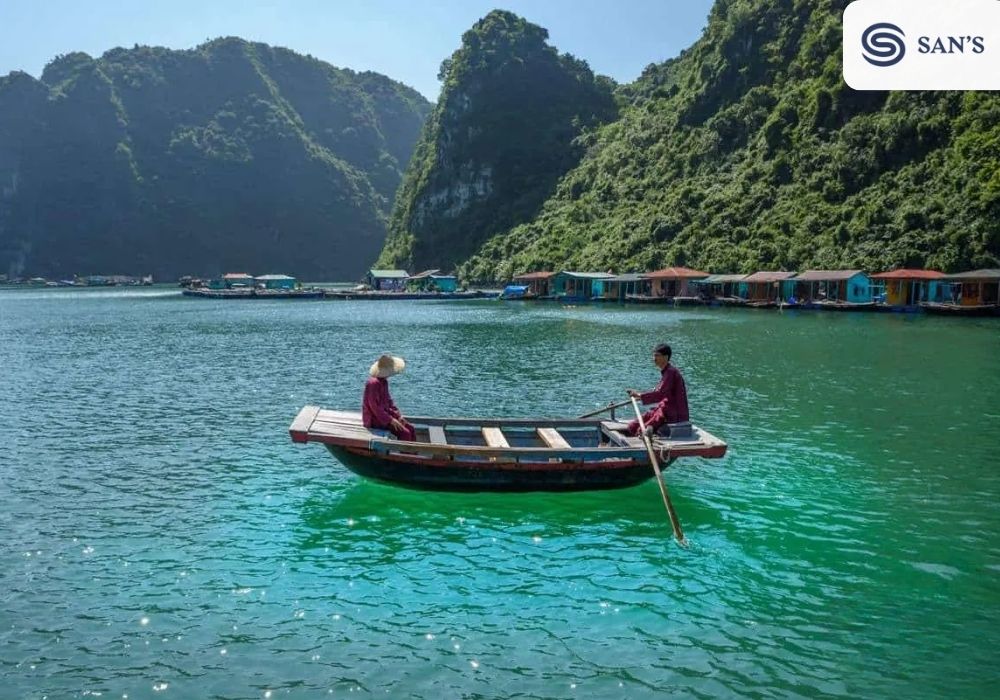
In the Past
Halong Bay and Lan Ha Bay have long been the sites of numerous floating villages. Life in these villages was traditionally challenging, particularly for children who needed to attend school. The Vietnamese government recognized these hardships and embarked on significant efforts to assist these families. They provided job opportunities and housing options to encourage relocation to the mainland, aiming to improve the quality of life for these communities.
Despite these changes, a resilient number of families chose to remain, continuing the traditional livelihoods of their ancestors. These families play a crucial role in Halong Bay’s tourism industry by offering a truly unique and unchanging glimpse into their way of life.
In Present Times
Today, visiting Halong Bay offers a remarkable experience to explore these floating villages. Each village, while similar in its floating lifestyle, showcases its own distinct charm and character. Collectively, they add to the vibrant tapestry of Halong Bay and stand as a vital component of Vietnam’s network of floating villages.
These enduring communities not only represent a pivotal part of Halong Bay’s history but also serve as a testament to the resilience and adaptability of the Vietnamese people. Their contribution to the tourism industry provides visitors with an unforgettable experience, one that is deeply rooted in tradition yet evolving with the times.
Cua Van: A Gem Among Halong Bay Floating Villages
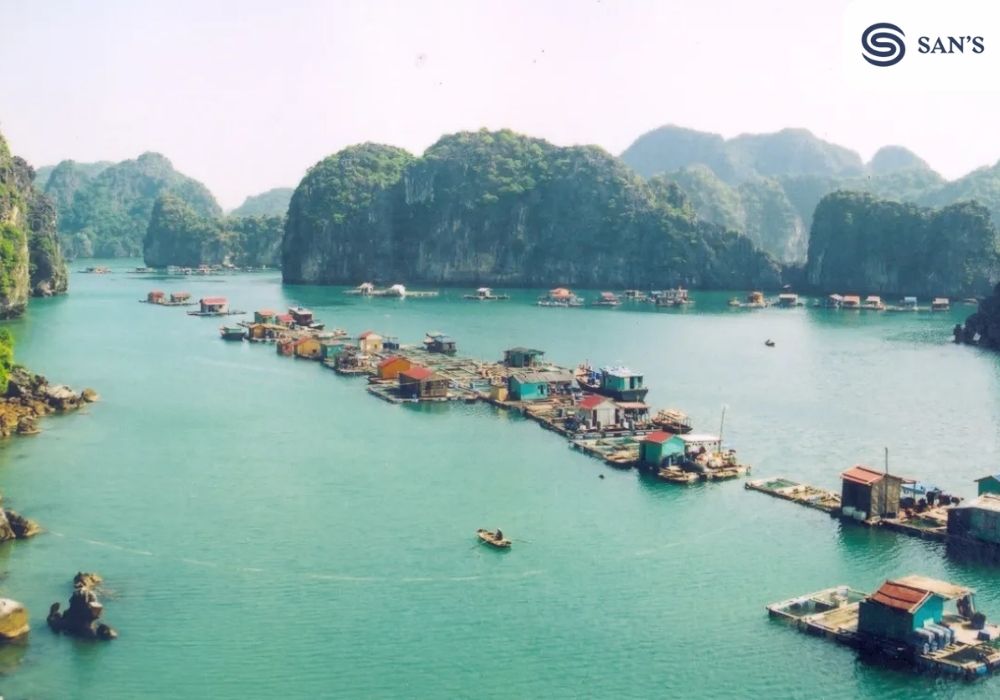
Location and Significance
- Location: Nestled in the Hung Thang commune, Cua Van stands out as a prominent example of the Halong Bay Floating Villages, located about 20km from Tuan Chau tourist pier.
- Prominence: It’s not only the largest but also the oldest among the Halong Bay Floating Villages.
Global Recognition and Visitor Accessibility
- World-Renowned Status: Cua Van has gained international recognition, being named one of the top 10 beautiful seaside villages globally by Travel + Leisure.
- Historical Acclaim: In 2012, it was included in the list of the world’s 16 most beautiful ancient villages by Journeyetc.com.
- Open for Visitors: This iconic floating village continues to welcome tourists, allowing them to immerse in its unique cultural fabric.
The Beauty and Culture of Cua Van
- Village Life: The village boasts around 300 vibrant floating houses, embodying the traditional culture of Halong Bay Floating Villages amidst breathtaking limestone mountains and serene waters.
- Tourist Experience: Visitors can delve into the life of fishermen and the scenic beauty of Halong Bay through activities like rowing boats or kayaking.
Visiting the Village
- Cruise Options: Given its location far from the mainland, exploring Cua Van as part of a cruise is advisable. Numerous cruises feature this quintessential Halong Bay Floating Village in their schedules, offering an integrated experience of the bay’s wonders.
Cua Van Floating Village, with its rich history, cultural depth, and stunning natural setting, serves as a quintessential representation of the Halong Bay Floating Villages. It offers an unmissable experience for anyone wanting to explore the unique lifestyle and scenic beauty of this UNESCO World Heritage Site.
Vung Vieng Fishing Village: A Serene Retreat in Halong Bay
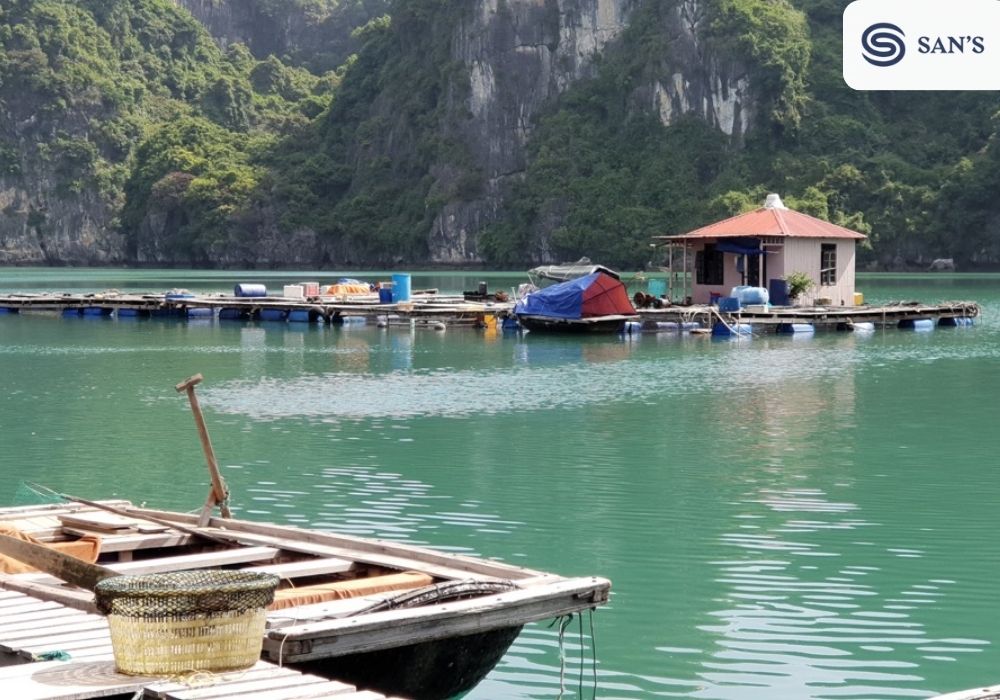
Overview
- Location: Nestled in the heart of Bai Tu Long Bay, Vung Vieng lies approximately 24km from the mainland. This tranquil spot forms an integral part of the Halong Bay Floating Villages.
- Historical Roots: Established in the 19th century, the village originated from ancient fishermen who used the area as a hub for anchoring ships and trading.
Cultural and Natural Highlights
- Village Symbol: The Cao Cave, known as the ‘village gate’, is a distinct landmark symbolizing the entrance to this traditional fishing village.
- Living Tradition: Despite its modest size, with just a few dozen households living on boats or rafts, Vung Vieng boasts a unique lifestyle, offering visitors a glimpse into the authentic life of a fishing community.
Changes and Tourism
- Transition: Following a 2012 directive by the Ha Long Bay management board, many residents moved to the mainland. However, the village continues to thrive, with locals now primarily serving visitors.
- Tourist Attraction: Vung Vieng is renowned for retaining the untouched charm of a traditional fishing village, drawing thousands of tourists eager to experience its pristine beauty and peaceful ambiance.
- Experiential Opportunities: Visitors have the chance to join local fishermen, trying their hand at fishing, or explore the bay’s natural splendor by local rowing boat or kayak.
Visiting Vung Vieng
- Cruise Visits: The most recommended way to visit Vung Vieng is through a Bai Tu Long Bay cruise that includes this picturesque village in its itinerary. This approach provides an immersive experience, blending scenic beauty with cultural discovery.
Vung Vieng Fishing Village, as a part of the Halong Bay Floating Villages, offers a unique blend of historical significance, cultural richness, and serene natural beauty. It stands as a testament to the enduring spirit of Vietnam’s maritime communities and a must-visit destination for those exploring the region’s floating heritage.
Ba Hang Floating Village: A Serene Escape in Halong Bay
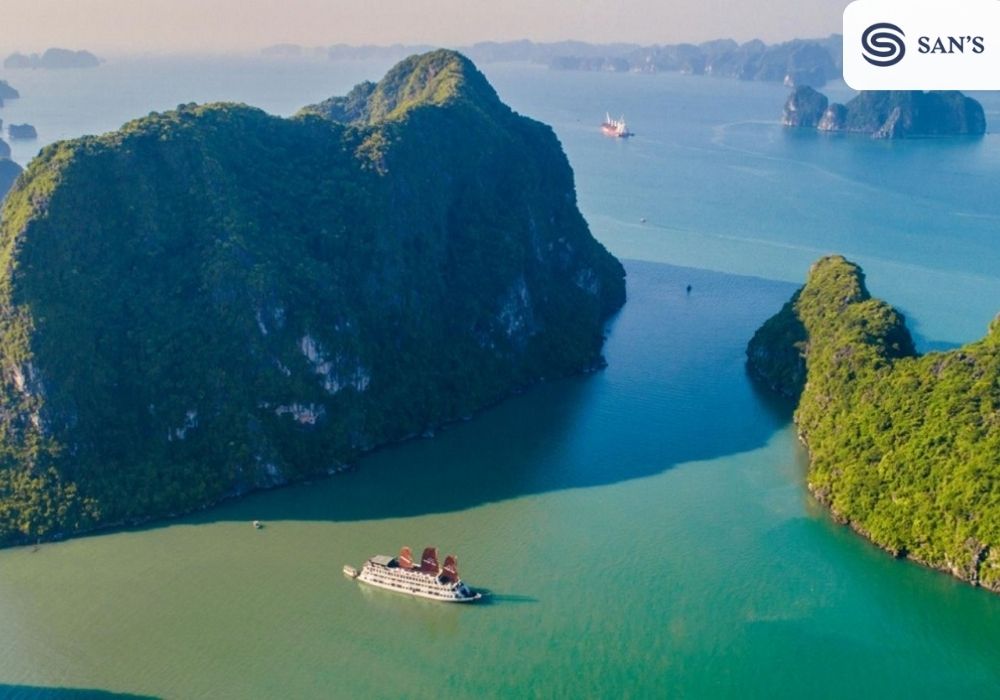
Location and Atmosphere
- Location: Tucked at the foothills of Dau Go Island, near Thien Cung Cave in Ha Long Bay, Ba Hang Floating Village offers a serene setting.
- Tranquil Beauty: Known for its small scale and pristine environment, Ba Hang stands out as a quieter option among the Halong Bay Floating Villages.
Unique Features and History
- The ‘Three Caves’ Phenomenon: The village gets its name from the appearance of three mysterious caves at low tide, allowing boats to pass through.
- Cinematic Fame: Ba Hang gained additional fame as a filming location for the movie “Kong: Skull Island.”
- Evolution: Once home to about 50 households primarily engaged in fishing, the village experienced a significant shift. In 2014, the government relocated these families to the mainland for a better quality of life, transforming Ba Hang from a traditional fishing village.
Tourism and Activities
- Visitor Status: While no longer a fishing village, Ba Hang is open to visitors, with locals providing boat rowing services for tourists.
- Natural Wonders: The village is characterized by towering limestone mountains, diverse flora, and tranquil waters, offering an idyllic setting for nature lovers.
- Exploration Options: Visitors can opt for kayaking to explore the area independently or enjoy a rowing boat tour for a more leisurely experience and photography opportunities.
Planning Your Visit
- Accessibility: Ba Hang is conveniently located about 3km south of Tuan Chau Port.
- Tour Options: One can book a Route 1 Halong Bay boat tour from Tuan Chau Harbor or Halong Port. A recommended travel company, San Travel, offers trips (contact: info@santravel.vn / +84.91297.2222)
Ba Hang Floating Village, as part of the Halong Bay Floating Villages, offers a unique blend of tranquility, natural beauty, and a glimpse into the bay’s evolving lifestyle. Its proximity to Thien Cung Cave and its distinctive landscape make it an appealing destination for those seeking a peaceful yet enriching experience in Halong Bay.
Cong Dam Fishing Village: A Pristine Haven in Halong Bay
Location and Natural Setting
- Location: Situated in Bai Tu Long Bay, in Vietnam’s Northeast region, Cong Dam is notably distant from the mainland.
- Unique Geography: Recognized as an open-air geological museum, this area has preserved natural wonders for over 340 million years.
- Natural Features: The village is surrounded by numerous ponds and underground lakes within limestone mountains, along with several white sandy beaches.
Cultural Significance and Current Status
- Cultural Preservation: Although no longer inhabited by fishermen, Cong Dam retains its traditional value as a symbol of the old fishing culture.
- Historical Population: Previously home to around 120 people, the village was a living testament to traditional fishing practices.
- Relocation for a Better Life: In line with the trend in Halong Bay Floating Villages, the residents have moved to the mainland, leaving the village to preserve its untouched beauty.
Visitor Experience and Activities
- Unspoiled Landscape: Far from urban development, Cong Dam boasts a wild and pristine environment with a refreshing atmosphere.
- Relaxation and Recreation: The natural scenery, clear blue seas, and tranquil setting offer visitors relaxation and a chance to connect with nature.
- Adventure Opportunities: The village is an ideal spot for kayaking, allowing explorers to navigate its serene waters and discover its hidden corners.
Planning Your Visit
- Cruise to Cong Dam: To visit this secluded paradise, booking a cruise to Bai Tu Long Bay that includes Cong Dam in its itinerary is recommended.
- Choose Your Cruise: With various options available, selecting a cruise that fits your preferences can be the key to experiencing the untouched splendor of Cong Dam.
Cong Dam Fishing Village, as a component of the Halong Bay Floating Villages, stands out for its geological significance, pristine natural beauty, and tranquil atmosphere. It offers a unique opportunity to witness a part of Halong Bay that remains largely unaffected by modern development, making it a must-visit for those seeking an authentic and serene experience.
Viet Hai Fishing Village
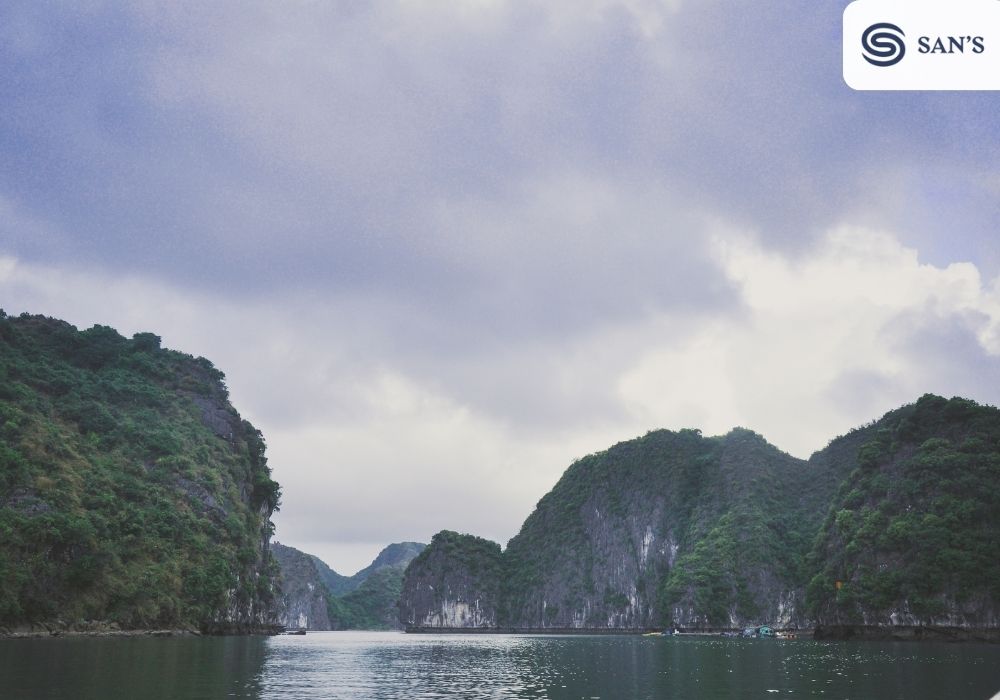
Location: Halong Bay, Quang Ninh Province, Vietnam (See on map)
Halong Bay, with its breathtaking limestone karsts and emerald waters, is renowned for its natural beauty and is a UNESCO World Heritage Site. Among its many wonders are the captivating Halong Bay Floating Villages, which offer a unique glimpse into the lives of the local fishing communities. These floating villages are a must-see when you visit Halong Bay.
What to Expect
- Scenic Beauty: The floating villages of Halong Bay are set against the stunning backdrop of towering limestone pillars. The picturesque surroundings make for a truly mesmerizing experience.
- Cultural Immersion: Visiting these villages allows you to immerse yourself in the rich culture and traditions of the local fishing communities. You’ll have the opportunity to interact with the friendly villagers and learn about their way of life.
- Floating Markets: Witness the unique floating markets, where locals trade fresh seafood and produce right on the water. It’s a fascinating spectacle and a chance to purchase some of the freshest seafood you’ll ever taste.
- Sustainable Tourism: Many of these villages have embraced sustainable tourism practices, with eco-friendly initiatives aimed at preserving the pristine environment of Halong Bay. Your visit can contribute to the conservation efforts in the area.
- Activities: Depending on the village you visit, you can engage in various activities such as kayaking through the village, taking a boat ride to explore nearby caves, or simply enjoying a peaceful moment on the water.
- Local Cuisine: Don’t miss the opportunity to savor delicious seafood dishes prepared by the skilled villagers. It’s a culinary delight that showcases the flavors of the bay.
How to Explore
To fully experience the Halong Bay Floating Villages, consider booking a cruise that includes a visit to these unique communities. Several cruise companies offer itineraries that allow you to explore the villages and their surroundings while enjoying the comfort of a cruise ship. Some of the popular cruise options for this experience include Era Cruise, Stellar of the Seas, Heritage Line Ginger Cruise, Mon Cheri Cruise, and Aspira Cruise.
Travel Tips for Exploring Halong Bay Fishing Villages
Visiting the fishing villages of Halong Bay is a unique and culturally rich experience. To ensure you make the most of your time in these fascinating attractions, here are some valuable tips from experienced locals:
- Select the Right Villages: While there are several fishing villages in Halong Bay, it’s recommended to focus on Cua Van and Vung Vieng. These villages are known for their authentic fishing communities, as some other villages have seen residents leave due to tourism development.
- Pack Lightly for Water Activities: If you plan to engage in kayaking or explore the villages by rowing boat, pack lightly. Wear comfortable clothing suitable for water activities and apply sunscreen to protect yourself from the sun’s rays.
- Optimal Time to Visit: The best time to explore these floating villages is from September to November. During these months, the weather is generally mild and pleasant, making your visit more enjoyable.
-
Capture the Moments: Don’t forget to bring your cameras or smartphones to capture the stunning scenery, unique lifestyles, and vibrant colors of the fishing villages. You’ll want to treasure these memories forever.
By following these travel tips, you can maximize your experience in Halong Bay’s fishing villages and gain a deeper understanding of the local culture and way of life. Make sure to visit at least one of these villages during your trip to this picturesque bay in Vietnam, and you’ll create lasting memories of your journey. If you’re looking for further information on the best Halong Bay cruises, don’t hesitate to reach out for assistance. Enjoy your exploration of this beautiful part of Vietnam.


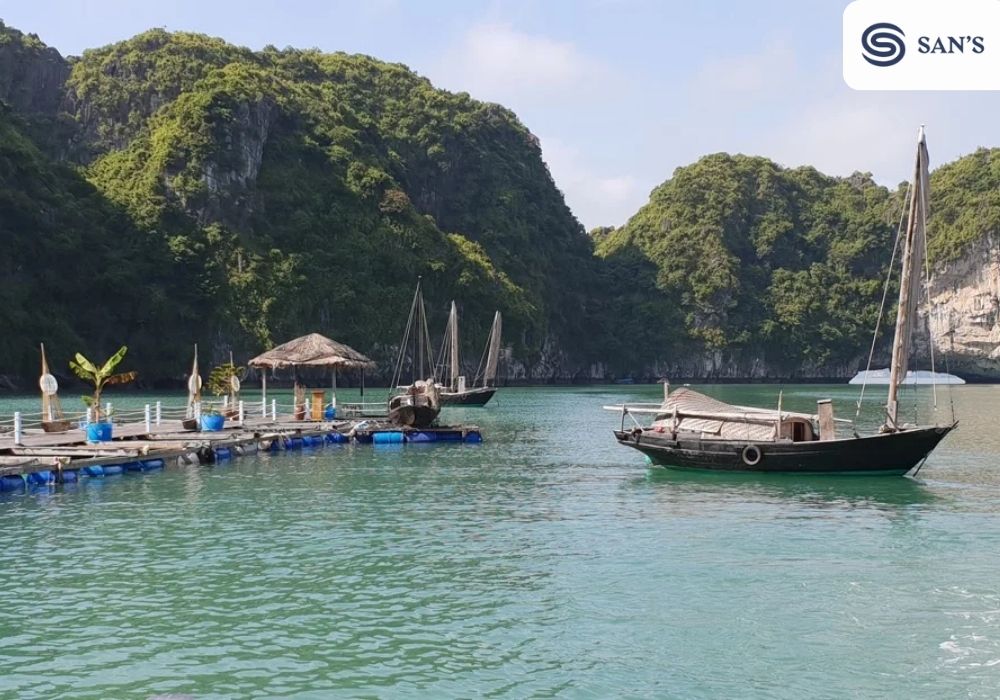
Comment (0)